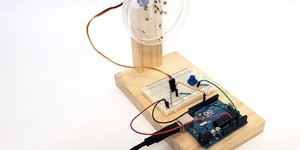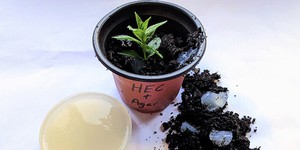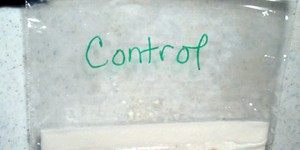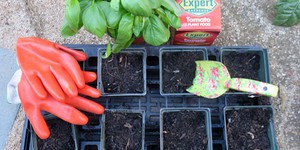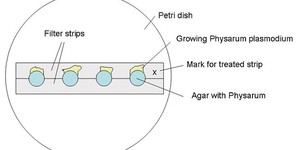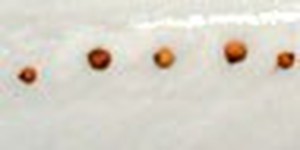Others Like “Cryopreservation: Freezing Plant Tissues” (top 20 results)
|
Can humans grow food in space? Can we grow plants on the Moon or on a space station? This is an important question to answer as humans look to expand our existence to the Moon, Mars, and beyond. In this science project you will build a clinostat, a device that can simulate microgravity right here on Earth and use it to explore the effects of microgravity on plant growth.
Read more
Germination is the process by which a seed emerges from the seed coat. Many different variables can effect the process of germination. Try to sprout seeds from different species of plant to see if different species vary in germination time. Are weeds faster germinators than vegetables? Try measuring seeds and then germinating them to see if big seeds sprout at a different rate than small seeds. Try sprouting seeds in different environments to test the effect of different environmental…
Read more
DNA is the "instruction manual" for the successful growth of a living thing, from a single cell to a mature adult. When the DNA of an organism is somehow damaged, it can have an impact on the organism's development over time. In this plant science fair project, you will track how irradiation (exposure to radiation) of radish seeds affects germination (sprouting of a seedling from a seed).
Read more
Do you know what plants need to grow? Sure, they need soil, water, and sunshine.
Everyone knows that. But here's a secret: they also need nitrogen. Plants use nitrogen to make DNA in their cells and
the proteins that lead to healthy stems and leaves. The problem is, although the Earth's
atmosphere is made up of 78% nitrogen, the form of nitrogen found in the atmosphere cannot be used by plants.
So how do plants get their nitrogen? Either through nitrogen deposits in the soil, or through…
Read more
Growing crops takes a huge amount of water. That same water is also needed for drinking, bathing, and other industries. In dry climates or lands experiencing drought, there is a big push to conserve (save) water as much as possible. In this project you will experiment with creating environmentally friendly jelly-like materials called hydrogels and see if they can help soil retain water thus reducing the amount of water needed to grow crops.
Read more
Hydrogen peroxide (often used as a disinfectant) has also been approved for use in pesticides. This science fair project investigates whether hydrogen peroxide has any effects on seed germination or on roots of plant cuttings.
Read more
Plants need nitrogen to grow healthy stems and leaves. Although nitrogen is the most abundant element in the air we breathe, that form of nitrogen cannot be used by plants. Nitrogen contained in fertilizer, on the other hand, is readily taken up by plants. In this experiment, you will compare plants grown without nitrogen fertilizer to plants grown with nitrogen fertilizer.
Read more
Plants have evolved many clever mechanisms to ensure that their seeds will wait for appropriate conditions before sprouting. Some may only germinate after a fire, others only after going through a cold spell. This project explores one important variable among many that determine the ideal conditions for seed germination.
Read more
In this biology science fair project, you will observe how the Physarum polycephalum (P. polycephalum) organism responds to various amounts of glucose. P. polycephalum is easy to grow in a petri dish and responds in complex ways to its environment. Will it grow toward the chemical as it looks for a meal, or will it flee, trying to avoid further contact? Try this science fair project to learn more about chemotaxis in the fascinating Physarum polycephalum.
Read more
We all know that plants need sunlight and water to grow big and tall. But did you know that inside seeds are baby plants, and that the fragile baby plant inside the seed needs to be protected? If you've ever had a sunburn, you also know that the sun gives off harmful radiation and heat. How much radiation and heat can a seed handle? Find out using some radish seeds, an oven, and your microwave!
Read more
|
Explore Our Science Videos
How to Measure Light with Google's Science Journal App
Valentine's Day Candy Delivery Robot
Volleyball Machine: 2019 Engineering Challenge


